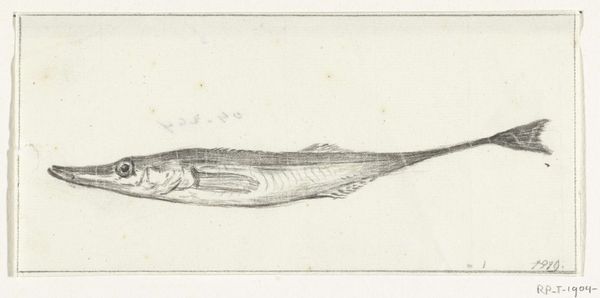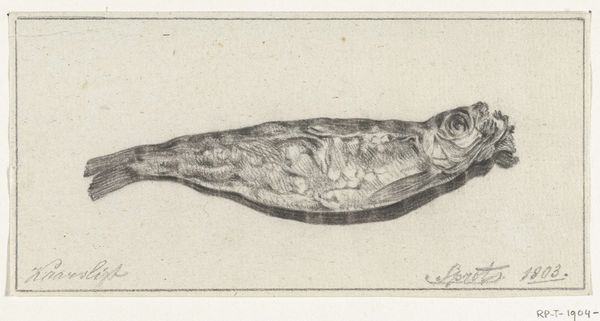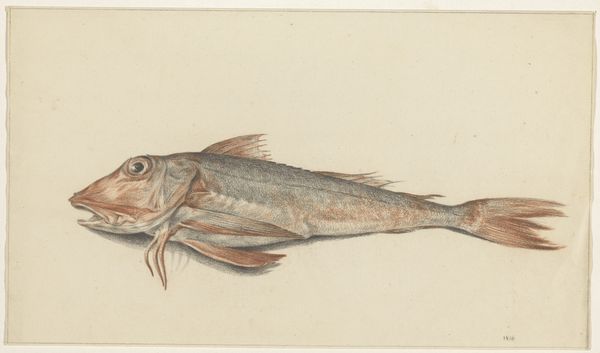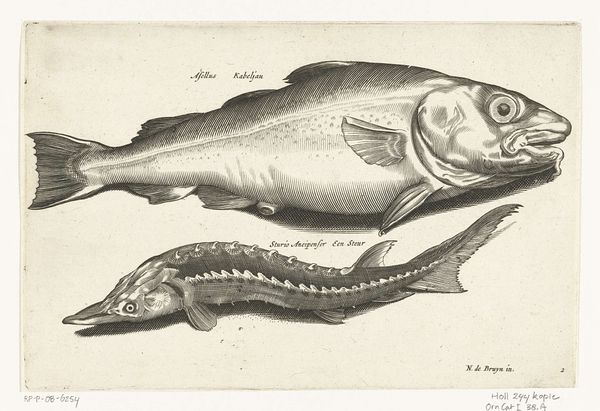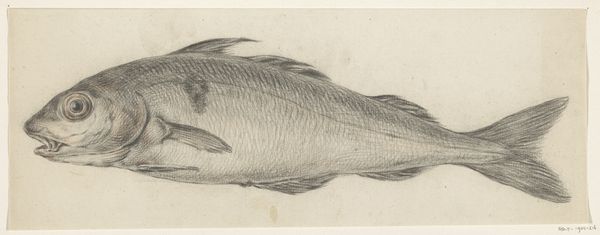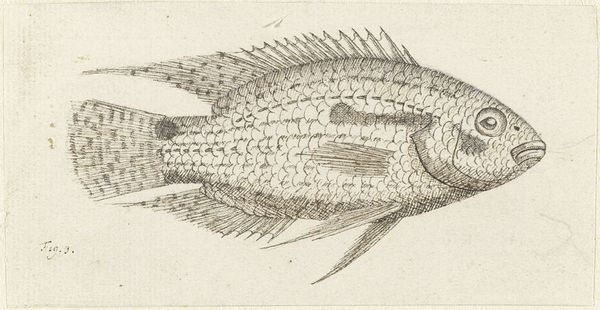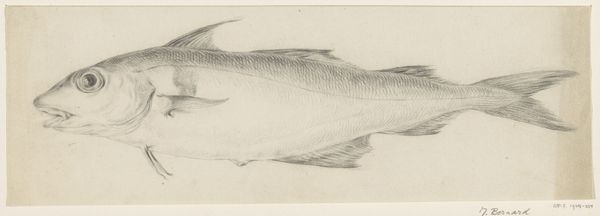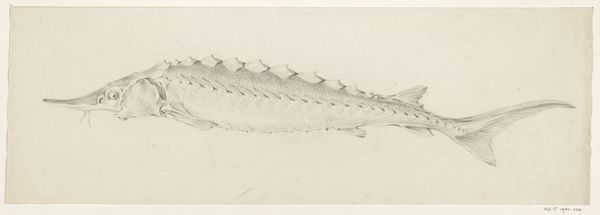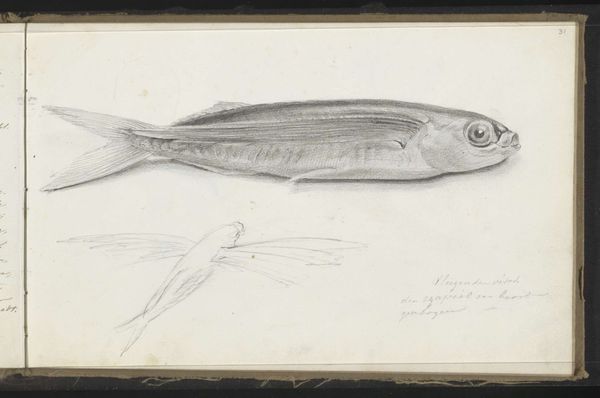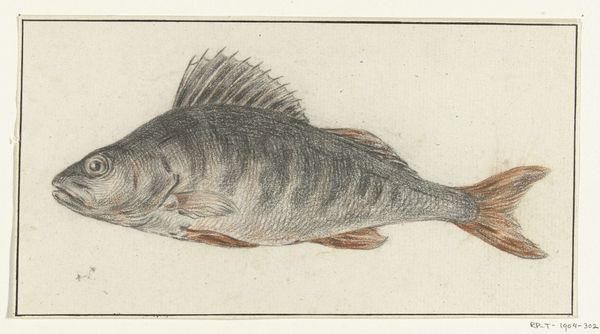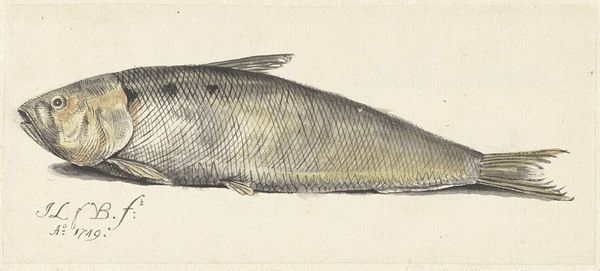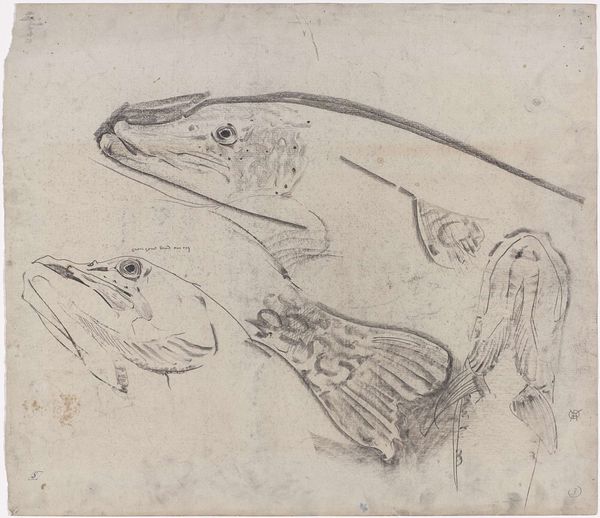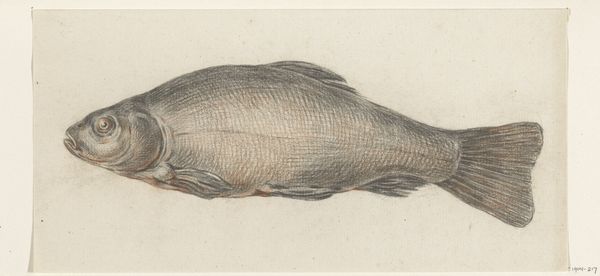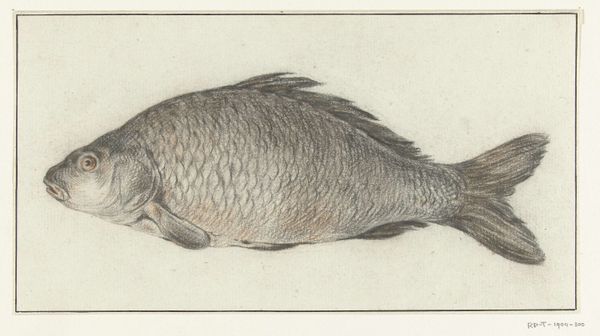
drawing, pencil
#
drawing
#
pencil sketch
#
romanticism
#
pencil
#
pencil work
#
realism
Dimensions: height 94 mm, width 184 mm
Copyright: Rijks Museum: Open Domain
Curator: Take a look at this incredibly detailed drawing by Jean Bernard. Titled "Vis," dating back to 1819, rendered delicately with pencil. It’s part of the Rijksmuseum collection. Editor: A fish. Well, it's...precise. Rather stark, almost clinical in its presentation, isn't it? The lack of color adds to the sense of detached observation. Curator: Indeed. The artist's choice to depict this fish, its texture, and even its anatomy reflects a burgeoning scientific interest characterizing the Romantic period. There's a quest for understanding the natural world underpinning it. Editor: Yes, but it also has this inherent elegance. Look at the subtle gradation of shading – from the dorsal ridge right down to the delicate rendering of the scales. He understood how to use line and tone to create depth and dimension, it's about observation more than science, surely? Curator: I agree; the artistry is evident. However, it's important to remember that natural history and artistic expression were often intertwined during that era. Artists were attempting to document and categorize the world, lending credence to new institutions of natural learning that sprung up everywhere, for instance, in Amsterdam itself. Editor: You're right; context enriches everything. I'm starting to read the fin placement as something akin to dynamic motion instead of fixed objectivity, do you see that now? It seems that while observing the world Bernard wanted the observer to sense life itself in the piece, despite the use of monochrome. Curator: Precisely. It reveals the complex relationship of man, Romanticism, and burgeoning empirical thinking. An artwork such as this bridges art and the study of zoology. Editor: Looking at "Vis" has allowed me to see not just a representation of a fish, but a convergence of scientific inquiry and aesthetic skill. The blending is so clear, it feels like this particular drawing could have altered both the nature and definition of art itself. Curator: Absolutely. By seeing it through a wider historic, cultural, and social lens it does so much more than give visual pleasure; it presents a crucial glimpse into society during the early 19th century.
Comments
No comments
Be the first to comment and join the conversation on the ultimate creative platform.
